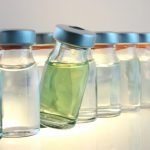Rise in Cancer Deaths to 10 Million
Edited By NODE SMITH, ND
From Institute for Health Metrics and Evaluation- Cancer deaths rose to 10 million and new cases jumped to over 23 million globally in 2019, according to a new scientific study from the Institute for Health Metrics and Evaluation (IHME) at the University of Washington School of Medicine.
At the start of the decade in 2010, total cancer deaths numbered 8.29 million worldwide and new cancer cases were at 18.7 million; the counts by the end of the decade in 2019 represent increases of 20.9% and 26.3%, respectively.
The paper was published in JAMA Oncology, and is part of the Global Burden of Diseases, Injuries, and Risk Factors Study 2019 (GBD 2019).
The researchers estimated cancer burden and trends globally for 204 countries and territories. They found that cancer was second behind only cardiovascular diseases in the number of deaths, disability-adjusted life years (DALYs), and years of life lost (YLLs) among 22 groups of diseases and injuries globally in 2019. Within the total cancer burden, the five leading causes of cancer-related DALYs for both sexes combined were tracheal, bronchus, and lung (TBL) cancer; colon and rectum cancer; stomach cancer; breast cancer; and liver cancer. TBL cancer was the leading cause of cancer deaths in 119 countries and territories for males and 27 countries and territories for females.
Although the absolute burden of cancer increased in both deaths and new cases from 2010 to 2019, the global age-standardized mortality and incidence rates decreased by 5.9% and 1.1%, respectively. From a country perspective, the age-standardized mortality rate decreased in 131 countries and territories and the age-standardized incidence rate lessened in 75 countries and territories. The small percentage declines globally are promising, but the researchers caution that there may be setbacks in cancer care and outcomes due to COVID-19. The effects of the pandemic on cancer morbidity, mortality, and prevention and control efforts were not accounted for in this GBD study, which analyzed global cancer burden through 2019.
The authors also analyzed cancer burden based on Socio-demographic Index (SDI), a composite measure of income per capita, average years of education, and total fertility rate for people younger than 25 years of age.
While the global trend for age-standardized mortality and incidence rates is encouraging, the reduction in rates appears to be driven by higher SDI locations. For mortality, age-standardized rates decreased in the middle, middle-high, and high quintiles and increased in the low and low-middle quintiles. Similarly, for incidence, the age-standardized rates decreased in the high-middle and high quintiles — with the largest decrease in the high SDI quintile — while increasing in the low, low-middle, and middle SDI quintiles.
“Ensuring that global progress against cancer burden is equitable is crucial,” said Dr. Jonathan Kocarnik, lead author on the study and Research Scientist at IHME. “This will require efforts to reduce disparities in cancer prevention, treatment, and survival, and the incorporation of local needs and knowledge into tailored national cancer control plans.”
Dr. Kocarnik and his co-authors suggested that the larger increases in the lower SDI quintiles likely reflect ongoing epidemiological transitions, demographic shifts, and disparities in cancer prevention, care, and control. Even without accounting for the COVID-19 pandemic, the absolute burden of cancer is already growing substantially worldwide.
Some additional findings from the study:
- Breast cancer was the leading cause of cancer-related deaths among females worldwide, including for 119 countries.
- On a global scale, 96.9% of cancer-related DALYs, which is the sum of YLLs and years lived with disability, can be attributed to YLLs or premature death.
- Of the 22 groups of diseases and injuries in the GBD study, total cancer is the leading cause of DALYs for the high SDI quintile and among the top five causes of DALYs for three of the remaining four SDI quintiles.
1. Jonathan M. Kocarnik et al. Cancer Incidence, Mortality, Years of Life Lost, Years Lived With Disability, and Disability-Adjusted Life Years for 29 Cancer Groups From 2010 to 2019. JAMA Oncology, 2021; DOI: 10.1001/jamaoncol.2021.6987

Node Smith, ND is a naturopathic physician in Humboldt, Saskatchewan and associate editor and continuing education director for NDNR. His mission is serving relationships that support the process of transformation, and that ultimately lead to healthier people, businesses and communities. His primary therapeutic tools include counselling, homeopathy, diet and the use of cold water combined with exercise. Node considers health to be a reflection of the relationships a person or a business has with themselves, with God and with those around them. In order to cure disease and to heal, these relationships must be specifically considered. Node has worked intimately with many groups and organizations within the naturopathic profession, and helped found the non-profit, Association for Naturopathic Revitalization (ANR), which works to promote and facilitate experiential education in vitalism.










